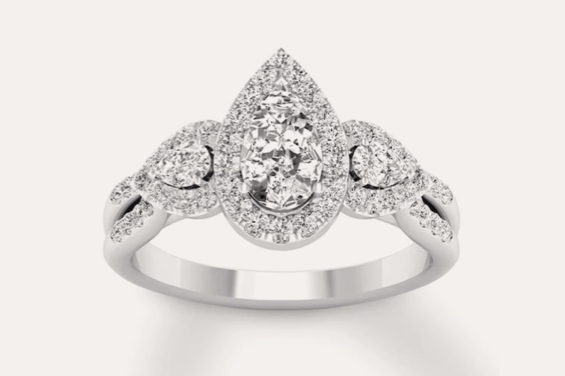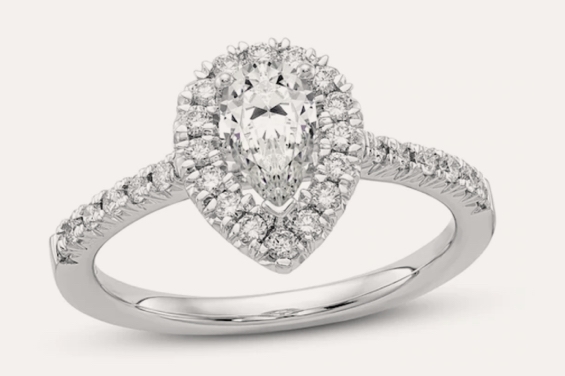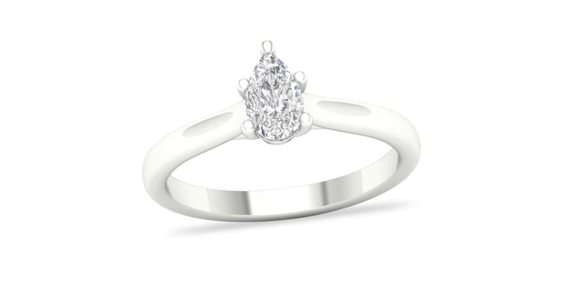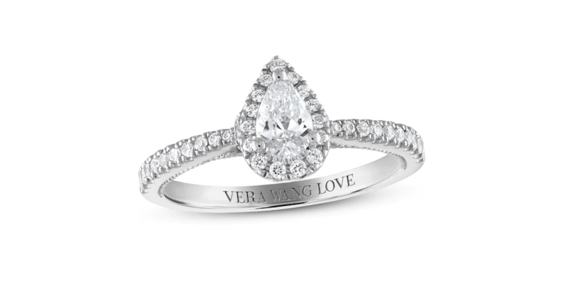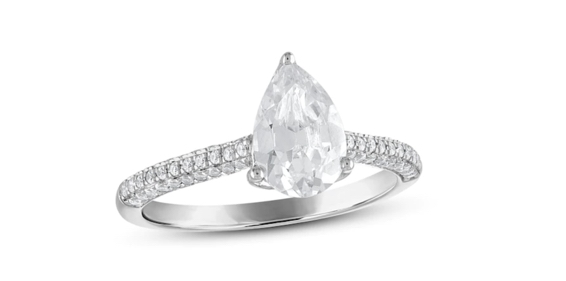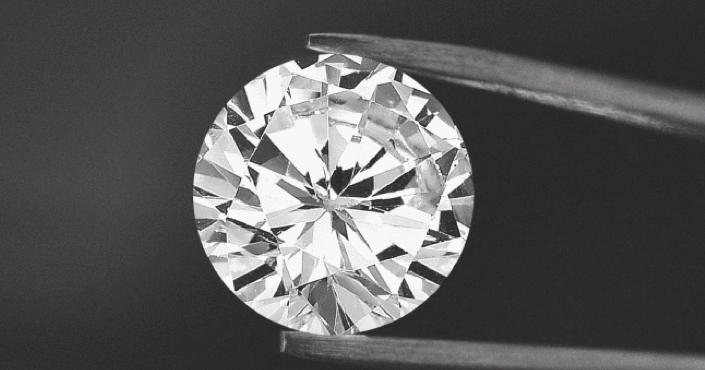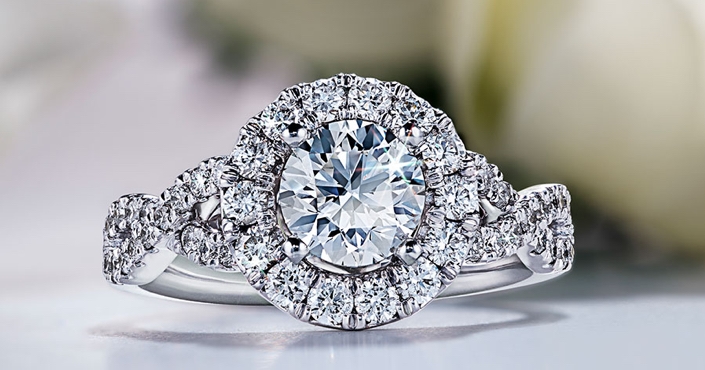Considered a “fancy shape”, a pear shape diamond is known for its high sparkle and vintage look. Originated by a Polish gemstone polisher in the 1400s, the pear-shaped diamond, also known as a teardrop shape, uses facet placement to maximize shine and brilliance. The pear cut has grown in popularity since the Renaissance period and today is a popular choice among A-listers like Cardi B, Sophie Turner and Victoria Beckham, to name a few. If you want a unique piece that you don’t see every day, a pear-shaped engagement ring might be just what you’re looking for.
Pear-Shaped Engagement Ring Buying Guide | Jared

